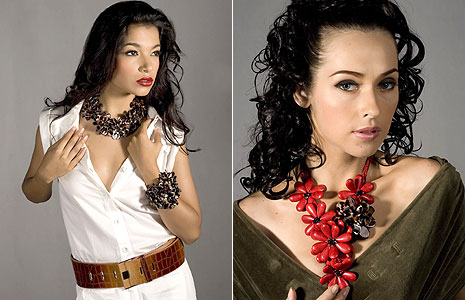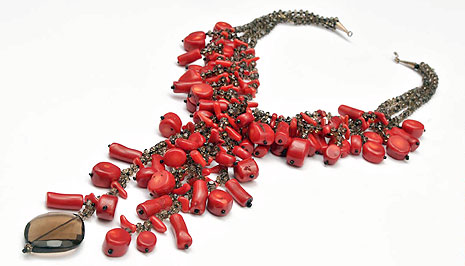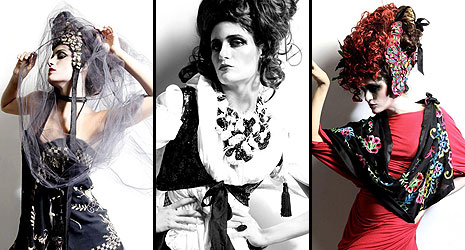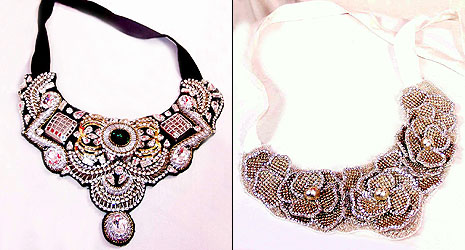
 Agnieszka Fijol, Senior Manager for South Asia at Cotton Council International, oversees all marketing efforts in the region including brand/retail trade relations, the Generic Cotton Education program in India. Fashionfad.in goes tete-a-tete with the face of Cotton Council International on her efforts which have been focused on the generic cotton promotion program, and aims to introduce Indian consumers to the benefits of cotton clothing and home textiles.
Agnieszka Fijol, Senior Manager for South Asia at Cotton Council International, oversees all marketing efforts in the region including brand/retail trade relations, the Generic Cotton Education program in India. Fashionfad.in goes tete-a-tete with the face of Cotton Council International on her efforts which have been focused on the generic cotton promotion program, and aims to introduce Indian consumers to the benefits of cotton clothing and home textiles.
What is Cotton Council International all about?
Cotton Council International (CCI) is a non-profit trade association with the goal of increasing cotton’s share of total fiber use globally.
CCI’s goals in India are to increase consumer awareness, appreciation and preference for cotton by:
Establishing the Seal of Cotton trademark as a symbol of quality 100% cotton products;
Emphasizing positive attributes of cotton; and
Promoting fiber awareness and cotton preference among consumers.
How long has it been functional in India?
CCI began a cotton promotion program in India in 2001 after noticing a steep decline in cotton’s market share with a proportionate increase in the consumption of man-made-fibers (MMFs). Cotton’s market share dropped from around 80% in 1980 to less than 60% in 2000. If this trend were to continue cotton’s market share in India would drop to under 40% by the year 2020.
What are the goals and objectives of the cotton council in India?
CCI’s goal is to increase cotton’s market share in India. We plan to do this through a variety of activities which address some of the misconceptions that exist about cotton, its uses and its functionality.
How do you plan to take it forward?
We plan to continue to engage strongly with the design institutes throughout India to educate and inspire up-and-coming designers. Our main vehicle for this will be the Let’s Design competition. Let’s Design is a reality show based competition which challenges young designers to work with cotton.
CCI will continue to highlight the versatility of cotton by partnering with established designers who are cotton-friendly, in a series of media workshops around the country.
CCI has also launched the Cotton Seal in India as a quality Trustmark to be used of 100% cotton products. Much like Woolmark is for wool products, the Seal will provide an identification mark for quality cotton products, giving consumers confidence in the cotton purchases. CCI has begun talks with brands and retailers and hopes to have labeled products in stores in the coming year.
What are the various organizations and events that Cotton council is associated with?
Over the years CCI has worked closely with India’s leading design institutes on a number of activities.
CCI works closely with the Cotton Association of India who is also developing a cotton promotion program.
How was the idea of let’s design generated and how beneficial has it been either ways?
Our program had been BTL heavy and we were not able to go beyond the top 10 cities for these activities. Hence idea of Let’s Design was generated out of the need to reach masses for our efforts.
The idea has been beneficial as we have been able to influence young up-and-coming designers in designs schools in India as well as established designers to think about cotton and design garments using only cotton fabric. Being on TV has given us unprecedented Pan-India reach, allowing us to ensured that the general public hears that cotton is not only ‘comfortable’ but also ‘fashionable’.
The pool of entries that we received for both seasons of Let’s Design spanned the entire country with entries from interiors of India. A vast change from our initial activities which only touch consumers in metros and mini-metros.
Has there been any association or plans to be associated with established designers for the training and experience of the winners of Let’s design?
CCI has worked with numerous establish designers over the past two years. The designers have been very supportive giving their valuable time to participate in Let’s Design and judges and have used the opportunity to give constructive criticism and advice to the contestants. CCI aims to keep this mentoring element as part of future activities.
Some designers that we have worked with include JJ Valaya, Ritu Kumar, Rajesh Pratap Singh, Anita Dongra, Neeta Lulla, Krishna Mehta, Meera and Muzafar Ali, Anita Vhargav, Rina Dhaka, Nachiket Barve, Mona Swapnil Shinde, among others.
How will India and particularly the Indian fashion industry benefit from the Cotton Council?
Cotton and cotton textiles play an important role in the economy. Having a strong domestic demand base for cotton can only stand to benefit the cotton based industries.
Is it also trying to promote usage of cotton amongst Indian designers and how?
Through our media work shops we highlight cotton collections of established designers, showing the versatility of cotton and hopefully encouraging other designers to incorporate more cotton into the collections.
Does cotton council also promote organic cotton if not why?
CCI supports all cotton, both conventional and organic.
Tell us in detail about the Seal of Cotton and what is the new buzz about?
The Seal of Cotton is a quality Trustmark that will serve as an identifier of quality 100% products, giving consumers confidence in the fiber content of their textile purchases. The idea of tying-up with brands to display the Seal on qualified products stems from in-depth consumer research in which respondents indicated that it is important to them to know the fiber content of their clothing.
How is the seal of cotton designed to help in the retail penetration in India?
As one of the most powerful consumer influencers, the adoption of the Seal of Cotton trademark can lead to increased sales. The Seal of Cotton trademark can also lead to increased customer confidence and trust in the brands that carry the label. The Seal not only makes shopping easier for customers, it is also a reassuring reminder of all that is wonderful about nature’s most versatile fiber. Licenses will also have the opportunity to develop innovative branding and marketing solutions for qualified products carrying the Seal of Cotton trademark.
What are the key market trends for cotton awareness in India?
Since the start of the program awareness of the Seal of Cotton has gone from 6% in 2001 to 27% in 2009.
Preference of cotton has increased in all categories.
Preference of Cotton 2003 2008 % change
Men clothing 58% 76% 31%
Women clothing 48% 57% 19%
Kids clothing 51% 72% 41%

 Agnieszka Fijol, Senior Manager for South Asia at Cotton Council International, oversees all marketing efforts in the region including brand/retail trade relations, the Generic Cotton Education program in India. Fashionfad.in goes tete-a-tete with the face of Cotton Council International on her efforts which have been focused on the generic cotton promotion program, and aims to introduce Indian consumers to the benefits of cotton clothing and home textiles.
Agnieszka Fijol, Senior Manager for South Asia at Cotton Council International, oversees all marketing efforts in the region including brand/retail trade relations, the Generic Cotton Education program in India. Fashionfad.in goes tete-a-tete with the face of Cotton Council International on her efforts which have been focused on the generic cotton promotion program, and aims to introduce Indian consumers to the benefits of cotton clothing and home textiles.





 A style defined by the elimination of excess along with strong Asian influences. Felix Bendish is a mixture of supremely classic, traditional, historical designs blending with real fashion. The label was launched in 2001 at the in-house design studio in Mumbai, where it creates exquisite handmade embroidered clothing and accessories.
A style defined by the elimination of excess along with strong Asian influences. Felix Bendish is a mixture of supremely classic, traditional, historical designs blending with real fashion. The label was launched in 2001 at the in-house design studio in Mumbai, where it creates exquisite handmade embroidered clothing and accessories.



 Niharika designs translate Silver-Screen moments to 24X7 Life. From couture to prêt, her lines are high-spirited and high-impact. Mix bold colours with clever cuts with embellish as required, her collection is for the woman who gets the limelight without stealing it. Niharika believes that the wearer and she are equal partners in making an outfit work.
Niharika designs translate Silver-Screen moments to 24X7 Life. From couture to prêt, her lines are high-spirited and high-impact. Mix bold colours with clever cuts with embellish as required, her collection is for the woman who gets the limelight without stealing it. Niharika believes that the wearer and she are equal partners in making an outfit work. 



 With Akshay R.S. Rathore a visual artist based in New Delhi, who has been practicing as a creative director for advertisements, publications and set design, set the ramp on fire for Gaurav Gupta’s show at the recent WIFW ’10/11. Born in 1978, Chindwara (Madhya Pradesh), India, he holds a BFA from the Faculty of Fine Arts, M.S. University, Baroda and a PG from the National Institute of design, Ahmedabad.
With Akshay R.S. Rathore a visual artist based in New Delhi, who has been practicing as a creative director for advertisements, publications and set design, set the ramp on fire for Gaurav Gupta’s show at the recent WIFW ’10/11. Born in 1978, Chindwara (Madhya Pradesh), India, he holds a BFA from the Faculty of Fine Arts, M.S. University, Baroda and a PG from the National Institute of design, Ahmedabad.




 WIFW brings that time of the year where all the glamour and hi fashion meets real business in Delhi, the fashion capital of the country. This season at the event that showcased collection for the coming Autumn/Winter 2010/11 by 130 designers was well attended by the loyal buyers as well as a few new additions to the list. Fashionfad.in plunges in the business scene at the fashion week to dig out the buyers’ point of view of the entire event and what they expect from the Indian designers.
WIFW brings that time of the year where all the glamour and hi fashion meets real business in Delhi, the fashion capital of the country. This season at the event that showcased collection for the coming Autumn/Winter 2010/11 by 130 designers was well attended by the loyal buyers as well as a few new additions to the list. Fashionfad.in plunges in the business scene at the fashion week to dig out the buyers’ point of view of the entire event and what they expect from the Indian designers. 

 Megan Ryley has worked in popular design, for labels like Tommy Hilfiger and in haute couture under the Maggie Norris label. During her days in New York, she started her own small boutique-designer knit line with a partner. And it was nothing else but these little ventures that fuelled the desire to start a full collection. So when she moved to India, she fell in love with the rich colours, textures and visually interesting sights. Then, she gave birth to the independent fashion designer lying dormant inside for quite a long time.
Megan Ryley has worked in popular design, for labels like Tommy Hilfiger and in haute couture under the Maggie Norris label. During her days in New York, she started her own small boutique-designer knit line with a partner. And it was nothing else but these little ventures that fuelled the desire to start a full collection. So when she moved to India, she fell in love with the rich colours, textures and visually interesting sights. Then, she gave birth to the independent fashion designer lying dormant inside for quite a long time. 









